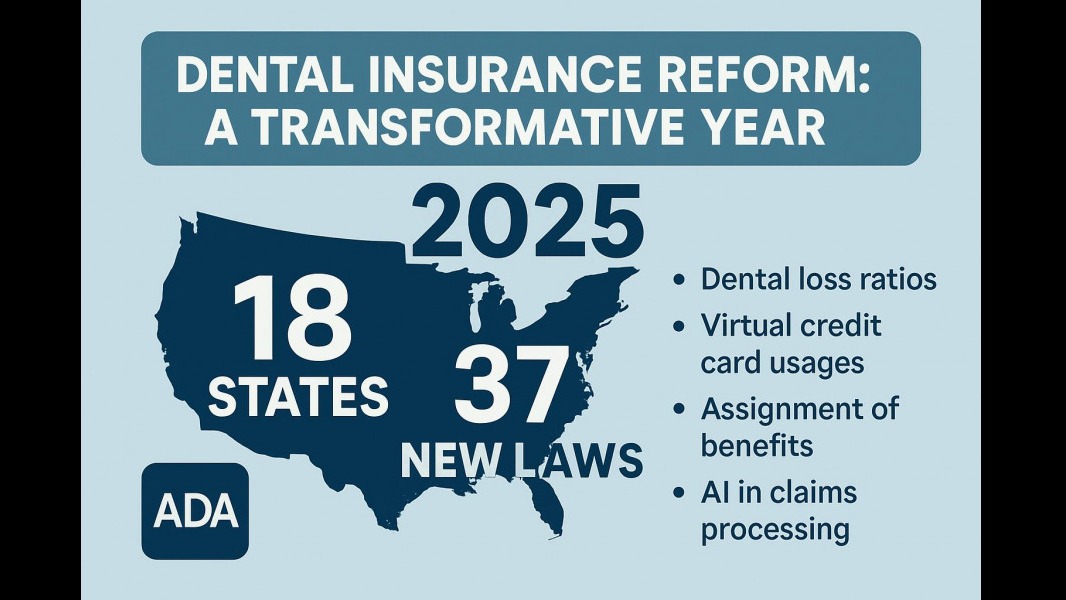
Anticipating Change: The Surge of AI in Dentistry
Artificial intelligence (AI) is not just a buzzword; it is redefining the landscape of dentistry. Companies like Alta AI, Planet DDS, and VideaHealth are making strides in offering solutions that streamline various administrative and diagnostic processes. For dentists like Dr. Emily Johnson, these innovations signal not only efficiency but an opportunity to enhance patient care. With platforms that reduce the time spent on charting and billing—such as ClaimsAI, which reportedly expedites claims submissions by 90%—the implications for practice management are transformative.
Moreover, as AI continues to evolve, dental practices may experience improved diagnostics and data analytics. This positioning allows practitioners to dedicate more time to patient interactions, thereby enhancing service quality and potentially increasing patient trust. The rise of AI innovations alongside the growing implementation of digital tools emphasizes the necessity for industry professionals to stay ahead of technological advancements.
Investment Trends: A Renewed Interest in DSOs
In recent times, Dental Service Organizations (DSOs) have captured the interest of both investors and the dental industry, reversing a recent trend of stagnation. With substantial funding coming in for organizations such as Allied OMS and Max Surgical Specialty Management, the DSO landscape is reshaping. This shift is particularly relevant for solo practitioners like Dr. Johnson, as it indicates a competitive marketplace ripe with opportunities for collaboration and network expansion.
This resurgence points to a potentially beneficial future, providing smaller practices avenues for better resources and support. As DSOs broaden their networks, they are not only enhancing scalability but may also introduce innovative practices designed to enhance patient care across the board.
The Employment Landscape: Signs of Recovery in Dentistry
The road to recruitment for dental practices has been fraught with challenges, particularly in light of recent employment statistics. Yet, recent job additions, especially in healthcare, signal cautious optimism. The Bureau of Labor Statistics notes that dental offices alone added 7,100 jobs, a welcome sign that the industry may recover from previous downturns.
For dentists like Dr. Johnson, this uptick in hiring might suggest a future where staffing challenges may ease, allowing her practice to focus on delivering high-quality care without the constant strain of finding qualified personnel. This scenario can lead to better employee satisfaction and improved patient experiences, creating a more holistic healthcare environment.
Challenges Ahead: The Implications of Medicaid Cuts
Despite positive developments in AI and DSO investments, looming uncertainties persist, particularly concerning Medicaid cuts outlined in the One Big Beautiful Bill Act. As the healthcare landscape adjusts, significant reductions in Medicaid funding could lead to dire consequences for many dental practitioners reliant on such reimbursements. The implications of these cuts, as highlighted by the CareQuest Institute for Oral Health, could exacerbate oral health disparities, particularly among underserved populations.
Dr. Johnson, who is deeply embedded in her community, recognizes that reduced funding can result in a significant increase in untreated dental diseases. If Medicaid benefits are slashed, the ripple effects will extend beyond just her practice; it raises profound ethical and societal concerns within the scope of healthcare accessibility.
Anti-Fluoride Movement: A Growing Concern
Recent governmental discussions regarding fluoridation reveal an unsettling trend that may impact public oral health practices. The Environmental Protection Agency's commitment to reviewing fluoride's health implications suggests that community water fluoridation could ultimately be at risk. For dentists, this poses a direct threat to community health as fewer preventive measures may lead to increased dental complications.
With key figures like HHS Secretary Robert F. Kennedy Jr. recommending against fluoride’s use, the potential removal of fluoride from water supplies fosters fear about rising cavities and other oral health issues. The challenge for dentists like Dr. Johnson will be to respond proactively to these changes while advocating for public health policies that protect community wellness.
Strategic Insights: Moving Forward in Dentistry
As the dental community navigates the duality of good and bad news, embracing innovation and fostering resilience will be critical. Dental professionals must prioritize continuous education on new technologies and regulatory changes while actively engaging in community outreach to safeguard public health initiatives.
Dr. Johnson stands to benefit from this pivotal moment in dentistry, leveraging AI technologies and collaborating with innovative DSOs, while being mindful of legislative actions that could jeopardize her patients’ welfare.
You're Not Alone: Join the Conversation
The dental landscape is evolving, and it's crucial for practitioners like Dr. Johnson to remain connected and informed. Whether you’re navigating the impacts of AI, DSO partnerships, or public health advocacy, joining organizations that represent your interests can provide critical support. Engage with your peers through forums, webinars, and community events to foster a network that encourages shared learning and professional growth.
If you want to optimize your practice and learn how upcoming trends could potentially impact your practice, consider participating in local dental seminars or online courses focused on innovation in dental technology and healthcare policies.
 Add Row
Add Row  Add
Add 




Write A Comment